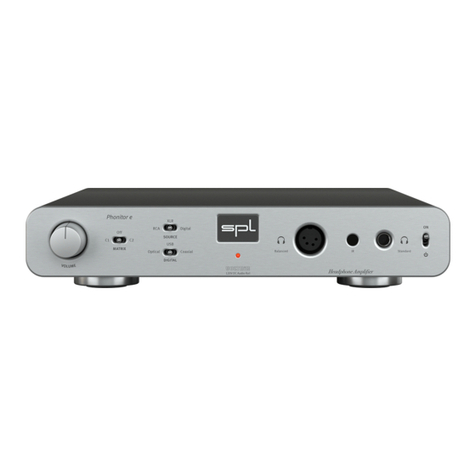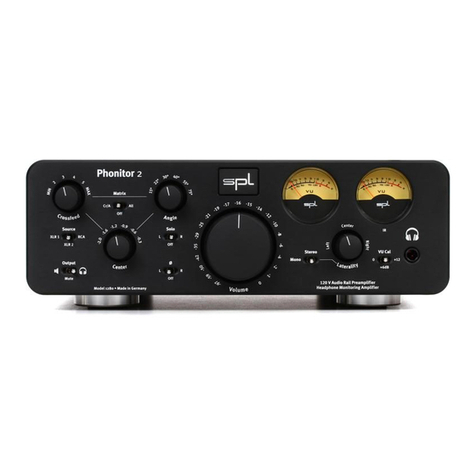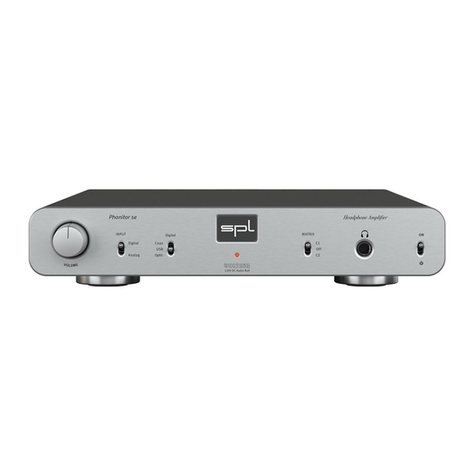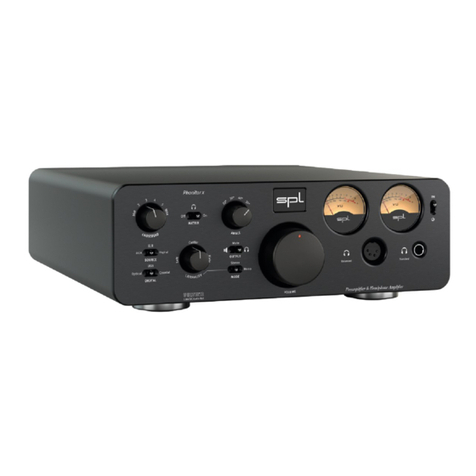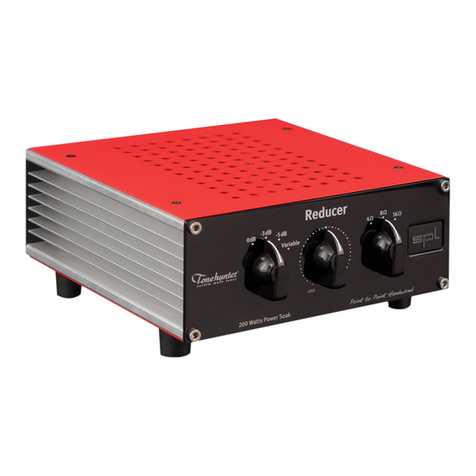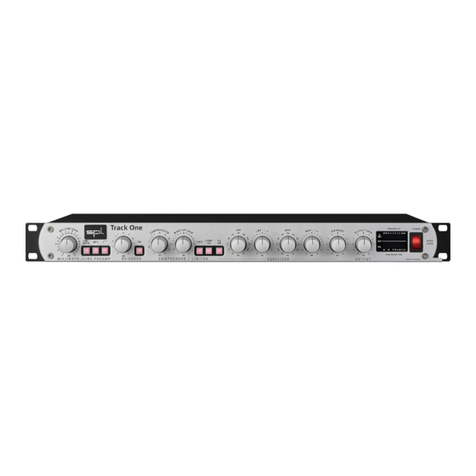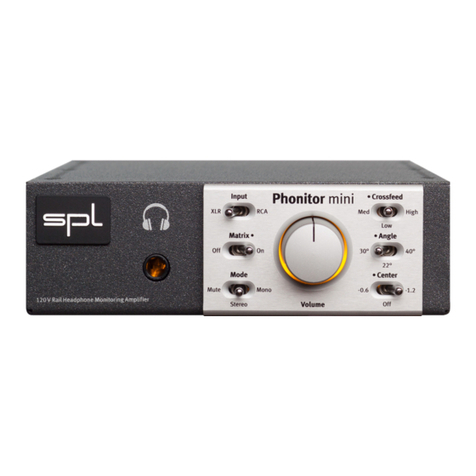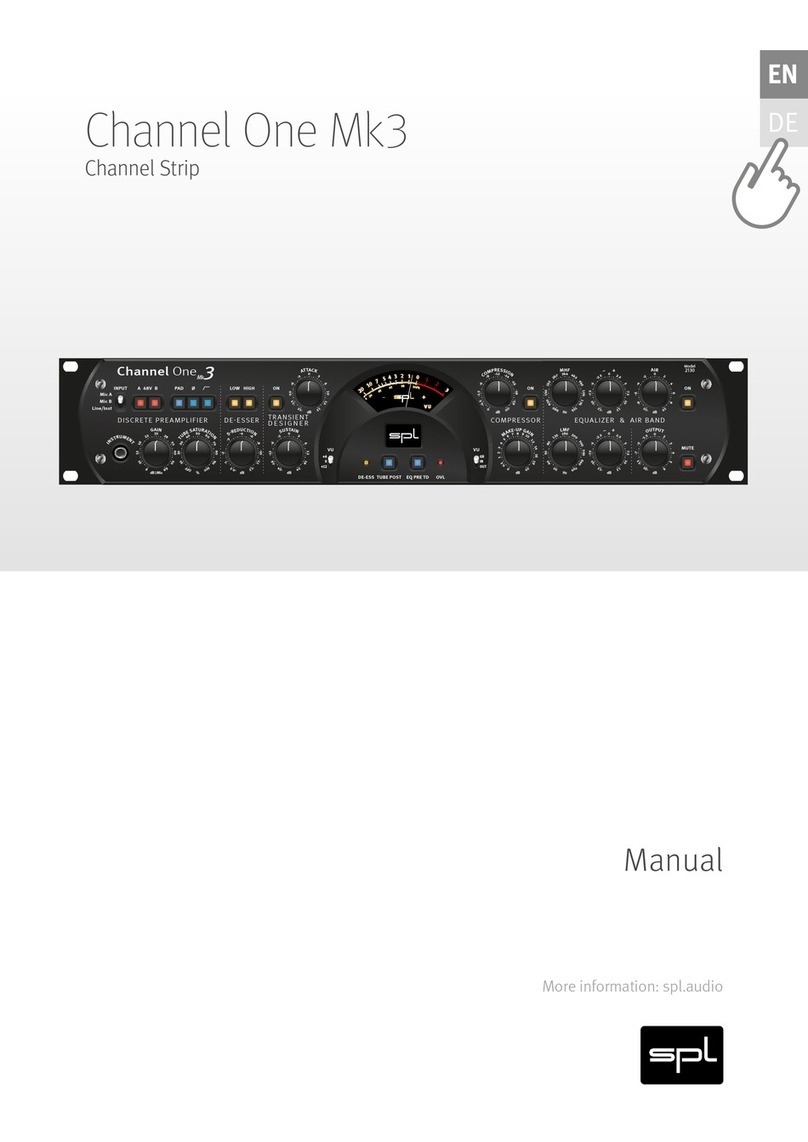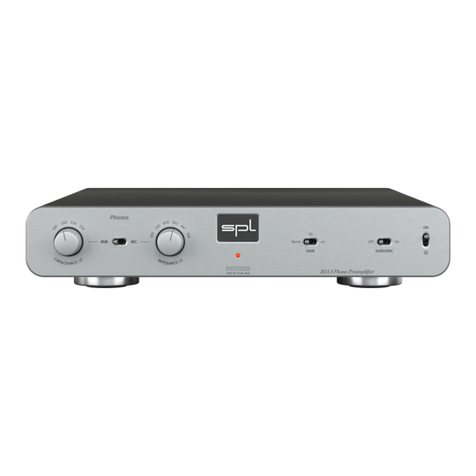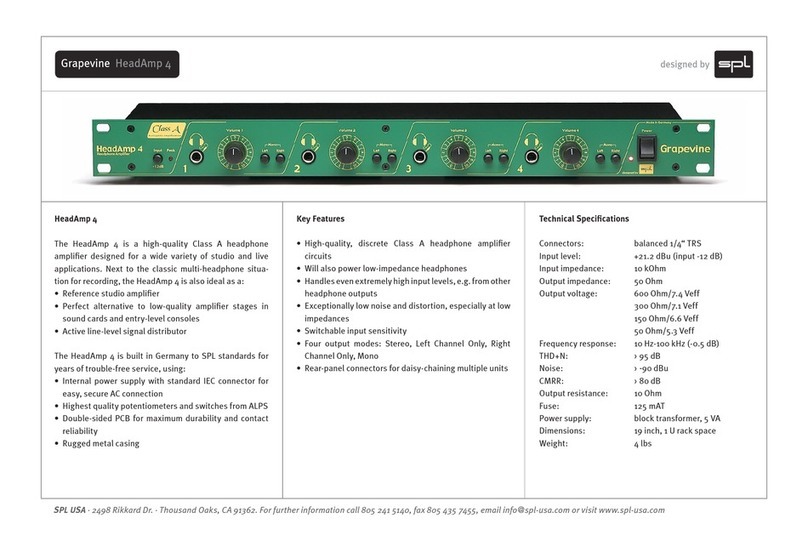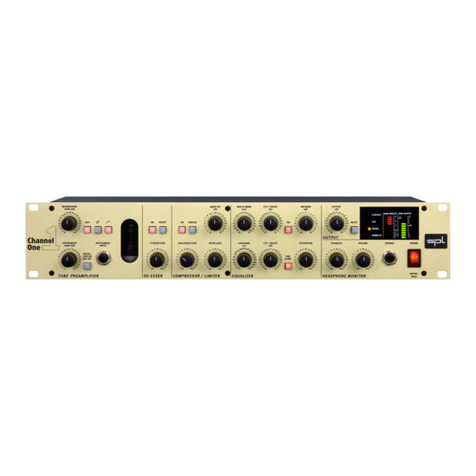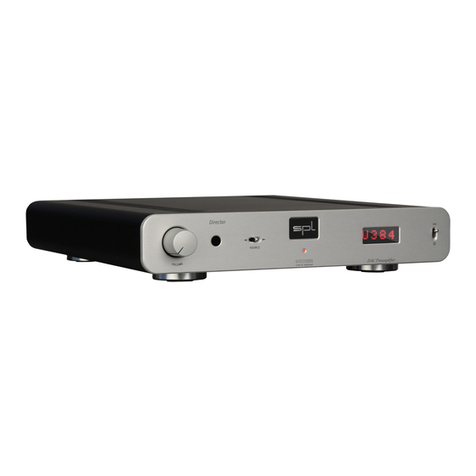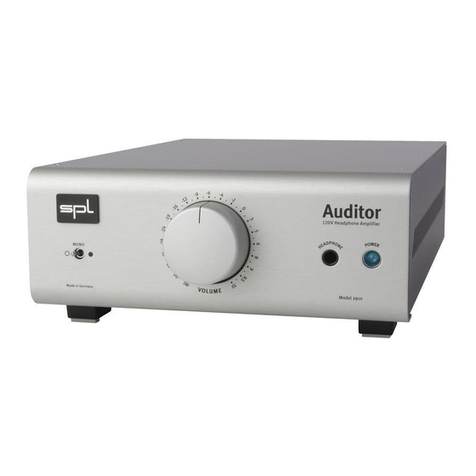2
Welcome
and thank you for choosing the Phonitorxe.
The Phonitor xe is the ultimate standalone device for headphone enthusiasts. It offers connections for head-
phones operated both balanced and unbalanced. With up to . W output power the Phonitor xe delivers an
impressive performance.
The Phonitor xe is the first Phonitor headphone amplifier which can be equipped with the brand-new SPL DAC.
This optional internal Uber-DAC qualifies the Phonitor xe to convert with outstanding sonic performance both PCM up
to kHz sample rate and bit as well as DSD up to DSD .
VOLTAiR technology is what we also call the SPL V Rail Technology within the Professional Fidelity series. This
makes the Phonitorxe an outstandig device in terms of dynamic range, signal-to-noise ratio and headroom deliver-
ing an exceptional sound experience with invincible serenity, transparancy and realness.
Phonitor
xe
V
O
L
U
M
E
M
I
N
2
3
4
5
M
A
X
Off On
MATR IX
C
R
O
S
S
F
E
E
D
2
2
°
3
0
°
4
0
°
5
5
°
A
N
G
L
E
VOLTAiR
120V DC Audio R ail Headphone Amplifier
ON
RCA
XLR
Coax
Optical
AES
USB
S
O
U
R
C
E
Mono
Stereo
MODE
L
A
T
E
R
A
L
I
T
Y
L
e
f
t
C
e
n
t
e
r
R
i
g
h
t
StandardBalanced
0+12 FR
VU
+6
~ 115V AC / ~230V AC, 50Hz / 60 Hz, P max. 45 W
RL
LR USBOPTICAL
COAX
Phonitor xe
Serial
Number
Made in Germany
PGM
VOLUME
Refer to
Manual
IR
AVIS: RISQ UE DE CHOC ÉLEC TRIQUE • NE PA S OUVRIR
RISK OF ELE CTRIC SHOCK
DO NOT OPEN
CAUTION
Fuses:
Voltage Selection:
230V AC: T 500 m A L 250 V
115V AC: T 1 A L 250 V
1. Remove Fus e Holder
2. Excha nge Fuses
3. Flip Ove r 4. Reinstal l XLRs: ba lanced, Pin 2 = Ho t (+)
For unbalanced operation
bridge Pi n 3 to GND.
RCAs: Unbalanced, T ip = Hot (+)
WIRING
ON BOTTOM SIDE:
DIP SWITCHES
1 ON: HP Out +22dB
2 ON: RCA -10dBV t o 0dBu
ANALOG SOURCESDIGITAL SOURCES
ANALOG SOURCES DIGITAL SOURCES
HEADPHONES OUTPUTS
HEADPHONES OUTPUTS
AES
R
L
StandardBalanced

